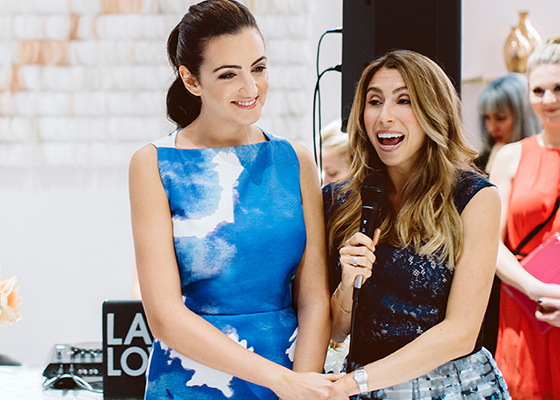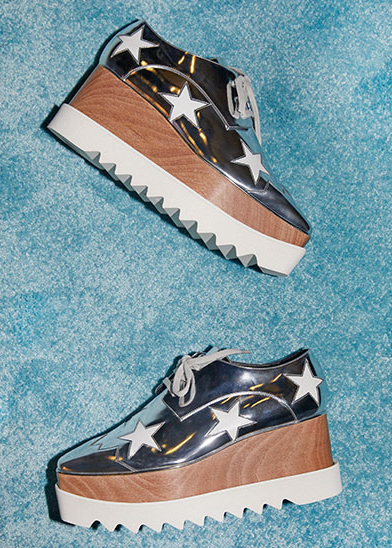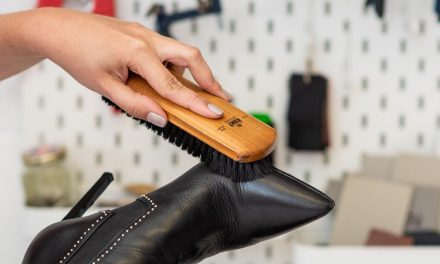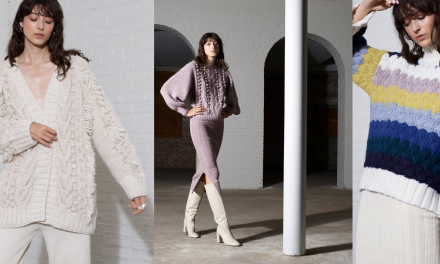Fashion Rental Revolution – Can you own less but wear more?
Image: Rent The Runway
A few years ago customers never dreamed of borrowing clothes, especially not from strangers. Fast forward to 2019 and renting your wardrobe is being hailed as the next consumer trend. We examine the fashion rental revolution and ask can you own less but wear more?
Ownership vs Experience
In a few years, will the concept of ownership still exist? With the advent of rental platforms such as Air BnB, Netflix, Zip Car and now wardrobe rental, it seems the future is less about owning and more about experiencing. Business of Fashion has predicted that ‘the shift to new ownership models is driven by growing consumer desire for variety, sustainability and affordability. Sources suggest that the resale market, for instance, could be bigger than fast fashion market within ten years.’ When Marie Kondo taught us that things should ‘bring us joy’ it was a revelation that did not match with many of the things we owned. According to Victoria Prew of peer to peer rental platform Hurr Collective, ‘we’ve witnessed the shift from ‘access’ towards ‘ownership’ across house-sharing and car-sharing, which are now both established behaviours. Fashion is a next logical step!’
If you love the rush of unwrapping a new fashion delivery, but are guilty of wearing things only once before throwing them away then this is the shopping experience for you. In the last 12 months alone, several new rental platforms have popped up in the UK. Companies like Girl Meets Dress and Front Row are the UK equivalents of US rental giant Rent the Runway. These companies buy designer pieces each season to rent to their audiences, making luxury fashion accessible. Front Row even hold customer votes to inform their buy. Hot on their heels are the new rental destinations Hurr Collective and By Rotation. Both are peer to peer rental services meaning that you can borrow pieces from a variety of stylish people in your area, as well as your favourite influencers. Think Air BnB but for your closet.
So why rent?
Jennifer Hyman, Co Founder of Rent The Runway began the venture with an aim to creating a closetless future with maximum possibilities. She believes we shouldn’t be restrained by the physical space of our wardrobe or the size of our wallet. Since launching their RTR Unlimited membership programme, customers have reported spending 70% less on clothing. With many wearing rented pieces for ⅓ of the month. Business of Fashion states that ‘ the average person today buys 60% more items of clothing than they did 15 years ago. But consumers keep that clothing for only half as long as they used to.’ Jennifer’s business model seems to be the antidote to fast fashion.
Data and tech really underpin these platforms, and are the reason we are only just now seeing a huge surge in popularity. ‘We’ve been building HURR for over a year and a half, but our launch coincided with the sustainable fashion movement really gaining momentum,’ Victoria at Hurr Collective explained. ‘We’ve built HURR as an on-demand platform that uses secure messaging systems, real-time ID verification and geo-tagging to ensure HURR is the most secure and trusted way to share your wardrobe.’ However tagging and mapping are only half the problems to be solved when helping consumers rent their wardrobes. How can rental companies justify the environmental cost of increasing demand for shipping and cleaning?
Is renting more environmentally friendly?
Arguably, by keeping these pieces of clothing in rotation, we are helping to extend their lifecycle and therefore reduce our consumption. However, Rent the Runway and Girl Meet’s Dress both buy new pieces each season, albeit in much smaller quantities than regular ecomm sites. Meaning they are still generating a need for new clothes. Peer to peer platforms seem to be more environmentally friendly, encouraging strangers and friends alike to share their wardrobes. We no longer have to feel guilty about buying something to wear once, knowing we can simply rent it out. However, could this model be further perpetuating the over consumption of fashion?
Other concerns such as shipping, cleaning, packaging and the end of the life of the rented garments should also be taken into account. Does reusing clothing justify increasing our carbon footprint through couriers and cleaning, or are we merely balancing out what is saved by producing less new clothing? At Hurr, they have made a concerted effort to align themselves in a greener way. They have done this by partnering with eco cleaning firm, Blanc London and Pedals, a green cycle courier service to deliver rented items.
Image: @byrotationofficial
However sustainability and being more environmentally friendly isn’t necessarily the most important reason many consumers now choose to rent. Social Media is certainly guilty of encouraging us to only be seen in an outfit once. Eshita Kabra, Founder of By Rotation believes renting presents a practical solution to a very real issue. When holidaying in India for her honeymoon, she was struck by the sartorial irony of how many outfits she had planned and packed compared with the huge amounts of textile waste she encountered in her Motherland. She created By Rotation to allow her and her peers to have more flexible and diverse wardrobes, whilst limiting the amount of waste they generated. ‘We have worked on building an inclusive community that considers their environmental impact and shopping habits, over a pure need to be seen in mid to high end fashion items,’ she told us.
Fashion Brands are joining the rental revolution
Third party platforms aren’t the only ones getting in on this new trend. Fashion brands are learning to embrace this dramatic new shift in retail too. Many are turning to rental and refurbishment models as a way to keep up. Eilien Fisher offers a Renew programme to give lightly worn garments a new lease of life. Stella McCartney has partnered with The Real Real to offer customers incentives to buy pre worn Stella McCartney consignment pieces.
Scottish based Laura Ironside already offers her customer’s a slow fashion alternative to luxury. However, she recently went one step further by allowing customers the chance to rent her beautifully made silk pieces too. The service gives customers the chance to experience luxury fashion for less. ‘We’re aiming for more circular business models,’ Laura explained. ‘ With garment leasing you can update and curate your wardrobe ethically for less.’
Nuuly, launching this Summer is a new platform by fashion giant Urban Outfitters Inc. Items from their own brands, unique vintage pieces and other labels that they stock will be available to rent in a wide range of sizes. Wear, swap, and if you can’t live without something, you can then purchase it. Urban Outfitters Inc. see Nuuly as the perfect answer to keeping up with Millennial consumer’s taste for new fashion on a small budget.
Image: Laura Ironside
Renting your wardrobe seems to be the perfect solution to many issues faced by modern consumers. How can I enjoy fashion, afford luxury and shop less? Renting offers a taste of the luxury side of fashion, as well as a guilt free way to consume. However, does renting produce a new issue of increasing the carbon footprint of less items of clothing through constant couriering and cleaning? It’s a challenge many companies like Hurr are rising too. Are we seeing a revolution in buying habits and consumption? We certainly hope so. Our planet needs us to be innovative now more than ever.
Disclaimer: The people and models in the images featured are not associated with The Vendeur and do not endorse it or the products shown. This post may contain affiliate links. Prices correct at time of publishing.









